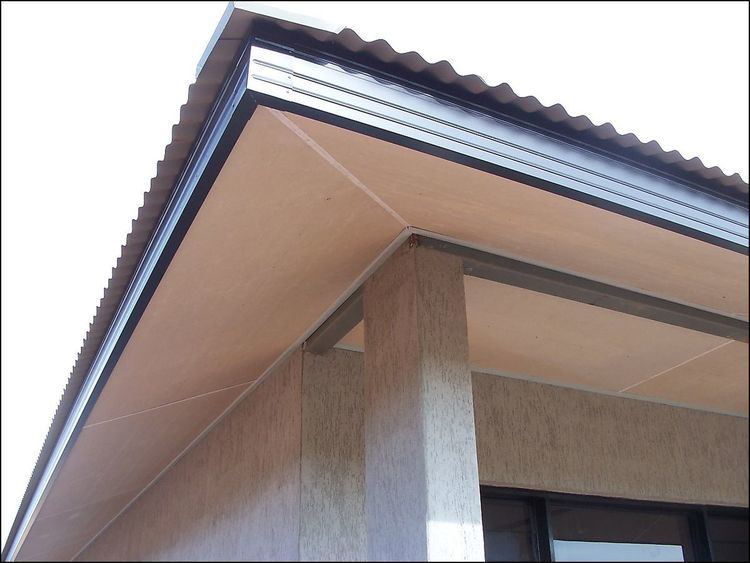 | ||
Soffit (from French: soffite, formed as a ceiling; directly from suffictus for suffixus, Latin: suffigere, to fix underneath), in architecture, describes the underside of any construction element. Examples of soffits include:
In popular use, soffit most often refers to the material forming a ceiling from the top of an exterior house wall to the outer edge of the roof, i.e., bridging the gap between a home's siding and the roofline, otherwise known as the eaves. When so constructed, the soffit material is typically screwed or nailed to rafters known as lookout rafters or lookouts for short.
Soffit exposure profile (from wall to fascia) on a building's exterior can vary from a few centimetres (2-3 inches) to 3 feet or more, depending on construction. It can be non-ventilated or ventilated for cooling non livable attic space. A grill that covers the venting opening on the bottom of the soffit is called a soffit vent. A soffit joist is also a related piece.
